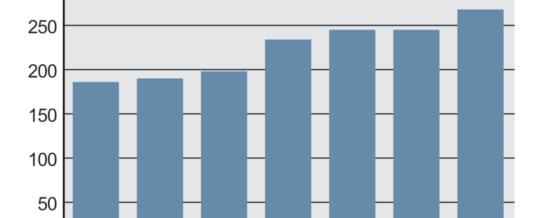
World coarse grains production is set to break records as farmers increase planted area in reaction to the highest prices in many years. Brazil and China will lead the way.
In its Feed Outlook report, published May 14, the Economic Research Service (ERS) of the US Department of Agriculture forecast global coarse grains production in 2021-22 at a record of 1.495 billion tonnes, up 58.5 million from the previous year. It warned, however, that the initial assessment is still highly tentative.
High maize prices, supported by strong Chinese demand, poor 2020 harvest results in Ukraine and a reduced outlook for the second 2021-22 crop in Brazil are expected to create an incentive for farmers to increase planted area.
“The largest increases are projected for Brazil, which continues to expand its second-crop corn area, and for China, where domestic prices for corn continue to break records,” the ERS said.
The worst drought in 40 years in Angola was responsible for a reduction, which will partly offset the increases. Sorghum area also is expected to rise on high prices caused by strong demand from China. Barley area is set to fall, with the biggest reductions in Australia, where it is outcompeted by wheat and rapeseed, and the United Kingdom, which is reverting to normal after a weather-related boost to plantings last year.
The European Confederation of Maize Producers (CEPM), in its May 11 Corn Market report of May, reported sharp rises in prices in the United States.
“Cool weather is slowing down emergence,” CEPM explained. “The central Corn Belt is expected to receive more rain, while the northwest, which has a water deficit, will remain dry.”
CEPM also noted the cancellation by China of some purchases with importers taking advantage of lower prices for next year.
“Domestic maize consumption is also on the rise again in the US,” CEPM said. “As a result of the economic recovery, fuel consumption is gradually returning to normal and with it, ethanol production.”
CEPM also pointed out that the Biden administration has moved to reverse exemptions from blending requirements.
The United Nations Food and Agriculture Organization (FAO) said in its Food Price Index on May 6 that “upward pressure from smaller-than-anticipated planting intentions in the United States and concerns about crop conditions in Argentina, Brazil and the US pushed maize prices up 5.7% in April,” putting prices for the crop 66.7% above the levels of a year earlier and at their highest level since mid-2013.
“International barley and sorghum prices continued to soften, falling 1.2% and 1% in April, but remained 26.8% and 86.5% above their respective values in the corresponding month last year,” the FAO said.
The International Grains Council (IGC), in its April 29 Grain Market Report, also reported that “maize markets had an extremely bullish tone during April amid tightening global supply prospects.”
The IGC’s index of maize prices rose by 13% over the previous month.
“Old and new crop US futures rallied sharply, led by a 24% rise in the nearby (May) contract, which traded with limit-up gains at times,” the IGC said. “Speculative funds turned busy buyers amid robust demand and deepening supply worries, linked to unexpectedly small US planting intentions, deteriorating production prospects in Brazil and a less-than-ideal start to spring plantings in the main northern hemisphere growers.”
The IGC’s index for barley rose by 7%, “buoyed by robust import demand, including from China, and steep gains in other grains.”
The IGC said French prices were supported by overly dry conditions for 2021-22 crops, while strong feed demand triggered rises in Australia.
Chris Lyddon is World Grain’s European correspondent.
Source: World Grain
JUN
2021


About the Author: